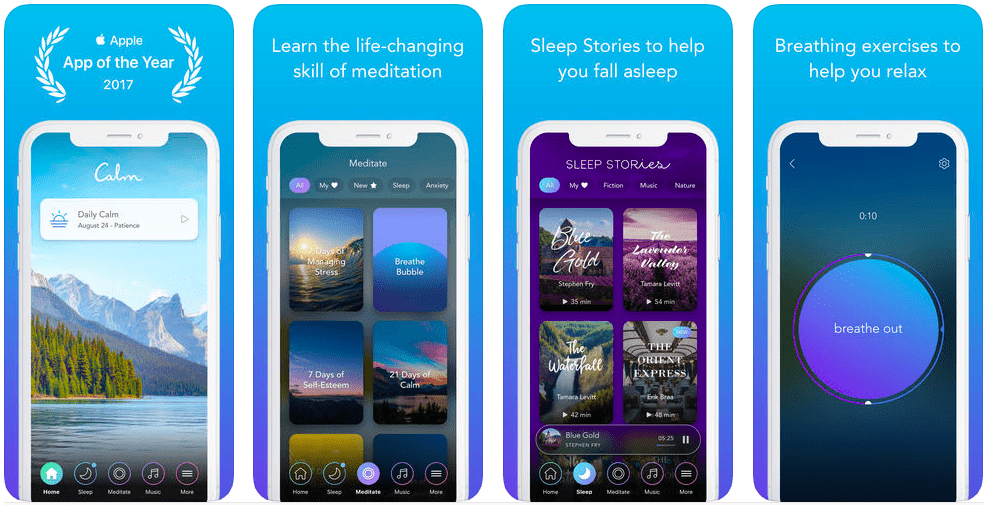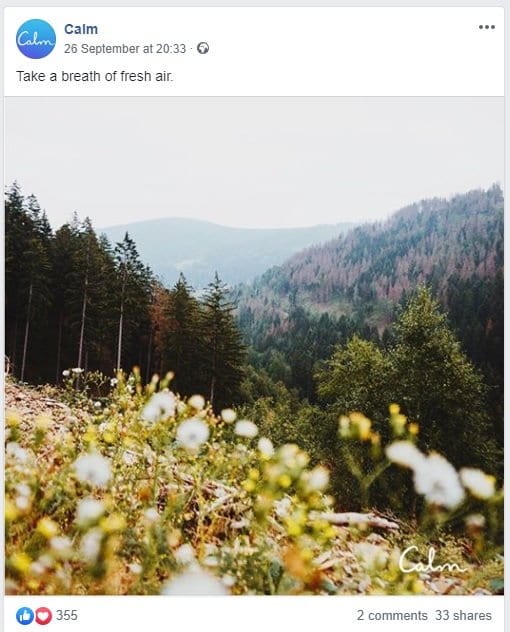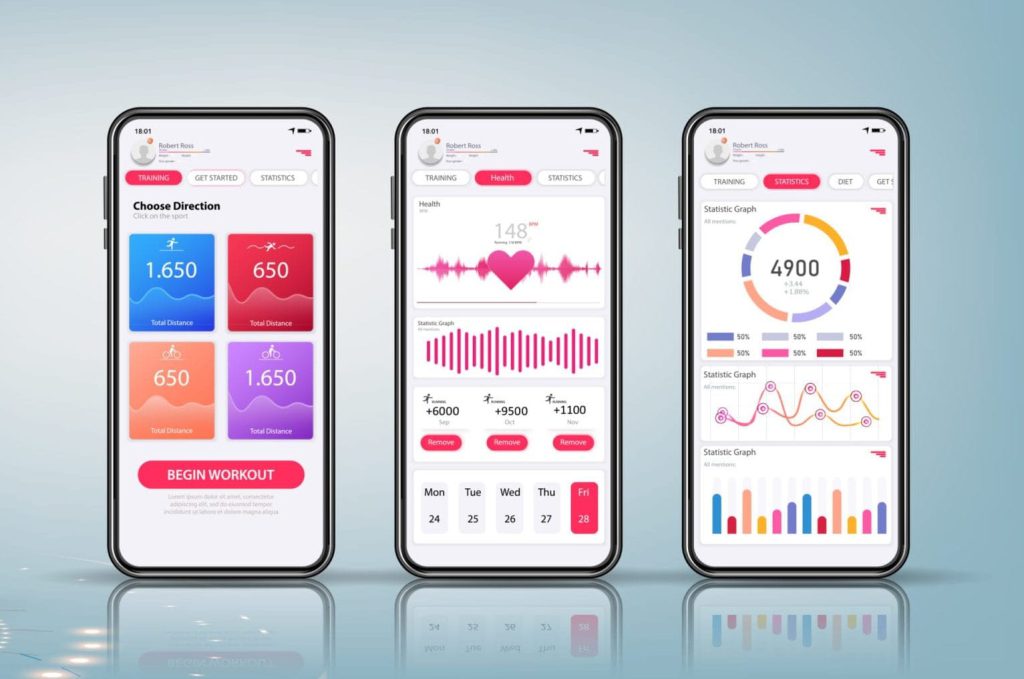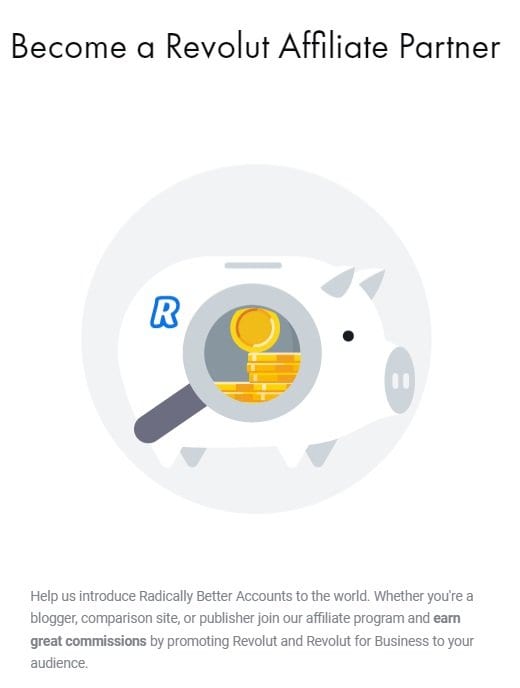App Marketing in 2025: A Guide for Startups & Corporations

With over six million apps in the app stores, learning how to promote an app and establishing an app marketing strategy is a must for any newly added app.
Users churn through apps really fast and increasing app store ranking is a process that takes time. Without a dedicated marketing campaign, the chances of growing your userbase are unfortunately close to none.
As we move into 2025, the world feels slightly more stable than the past few COVID-riddled years, but the mobile marketing industry is just as dynamic as ever. The introduction of turbulent privacy regulations continues.
This year, app marketing is heading towards first-party data collection and data clean rooms, a more comprehensive approach to ASO that places just as much importance on A/B testing and CRO as keyword optimization, and utilizing new tools such as Apple’s Product Page Optimization and Custom Product Pages to help the process.
In this article, we’ll guide you through everything you need to know if you want to promote an app in 2025, from pre-launch tasks to complete checklists, free marketing ideas, and FAQs.
You’ll also learn what not to do. Not all marketing is good marketing, and luckily for you, we happen to know a thing or two about the great kind.
How can we help?
For more questions, or to speak to award-winning mobile marketers here at Moburst, get in touch.
Steps for App Marketing: Pre-Launch
When learning how to market an app, it’s important to remember to do your pre-launch tasks first. Before pressing the big red launch button, you need to work on the following:
- Market research
- Branding and messaging
- App marketing budget
- App marketing strategy
- Traditional marketing methods
Without these, you’ll be wasting money on ads that are not targeted. Your purpose is to bring as many people to your app as possible, without wasting money or having a high churn rate.
Paying $1,000 for 100 installs with a 50% uninstall rate can happen if you don’t think things through in advance.
1. Conduct market research before you promote your app

Before marketing your app, you need to do three things:
- Define your user
- Establish which keywords you want to target
- Conduct a competitive analysis
For the first one, your company needs to decide on a user persona.
Think about the traits common to the types of users that will use your app on a daily basis.
You can set multiple user personas as long as you’re able to create a custom marketing message for each of them.
Your messaging to Gen Z should be totally different from your messaging to Millennials, for example.
To establish keywords, you can do an app store keyword research and decide on which keyword sets you’ll optimize your app for.

App store keyword research can be done through the following methods:
- Use ASO tools to find out which keywords bring the most searches. There are many tools out there ranging in price, such as AppTweak, AppFollow and MobileAction. They’re all upwards of $10,000 a year, which can be costly for your business, especially without the knowledge of how to navigate them to achieve optimum results. Enlisting the help of a mobile marketing agency can work in your favor.
- Analyze your competitors for keyword ideas, conversion rate strategies and marketing strategies. What keywords are they ranking for? Perhaps they’re targeting ones you hadn’t even considered, but should. What color scheme have they opted for in their screenshots? This could indicate what theme generates the most conversions among your target audience. Generally speaking, an app competitor analysis is always advised.
- Analyze reviews to better understand how users are describing an app. This can give you clues as to what they may search for.
- Brainstorm keyword ideas based on your app’s features. What will appeal most to potential users?
Choosing the best keywords and screenshots are some of the most important tasks when marketing your app!
Ranking on a query that only has 50 searches a month will result in extreme budget losses.
Also, conducting a competitive analysis is not only limited to keywords. It’s important to understand the market in which you’re operating to know what performs best with your potential users. Always keep your eyes on your competitors’ games to stay in the running.
2. Define your branding and messaging
One of the most important aspects of marketing is communication with the customer. The tone, message, and ideas you communicate are part of your brand and will influence the user’s decision to install your app or not.
For example, social media apps communicate in a personal and cheerful way with users. In their marketing copy, it’s all about the user. Everything the app does is to enrich the user’s experience and allow them to share it with others.
Another example we can offer is Calm, a guided meditation app that Moburst optimized for the App Store.

Calm’s purpose is to help people relax. Everything surrounding their brand identity and marketing communication is tranquil. This includes:
- A handwritten logo
- Images of nature
- Icons that “breathe” in order to help a user control their own breathing
- Relaxing blue tones meant to relax the user
With their entire social media presence, they do everything they can to help the user relax.

For example, the majority of their social media posts have specific goals to remind users to:
- breathe
- be present
- relax
- slow down
By taking care of their users’ well-being, they keep them close, increase brand awareness, and build upon the relationship between the brand and user.
In 2025, it’s wise to bear in mind important political conversations when establishing your branding and messaging. For example, back in 2020, global Black Lives Matter protests brought critical conversations to the forefront of nearly every brand’s identity and future strategy. Showing empathy and a willingness to do better is now more important than ever.
Ensure your brand values match those of your target users and that you’re effectively communicating them.
Defining your branding and messaging is also important for your CRO strategy. Both should be geared towards garnering conversions, which you can establish through both competitive analysis and A/B testing.
3. Tweak your app promotion budgets
It doesn’t matter if you’re starting at $10,000 a month or $1,000,000 a month to promote an app, a clear budget is needed to make sure that you’re not wasting money.
Even a 2% decrease in costs can be beneficial. Out of 1 million, that’s $20,000. It’s better for that money to stay in your company’s pocket, right?
Firstly, split your budgets into multiple niches. A percentage for app store optimization services, another for Media Buying and so on.
A quick tip that we recommend is defining your profit margins and the maximum CPI that you can afford.

By doing this, you enable your mobile marketing agency to have a nearly unlimited marketing budget.
Bear in mind, your app marketing budget should not be set in stone forever. Your agency should be allowed to raise the budgets as much as possible as long as you’re still making a good profit. It’s a dynamic process.
To explain this in detail:
CPI= Cost per install
- You have a budget of $10,000 per month for media buying.
- The Maximum CPI that allows you to make a profit is $10.
- Your agency manages to deliver a CPI of $6.
- Seeing that your CPI is still under the maximum limit, you should allow the agency to push your budget many times over $10,000 per month and only stop if they get close to the $10 limit.
By going with this approach, you are creating a scalable system that will skyrocket your earnings.
How can we help?
For more questions, or to speak to award-winning mobile marketers here at Moburst, get in touch.
4. Define your overall app marketing strategy
You’ve already defined who should use your app and decided on how big your budget is.
Now, it’s time to decide how you’ll push your app towards your potential users. It can be anything from social media, paid media or app store optimization.
We strongly recommend doing a marketing mix!
Your marketing channels should not compete with each other. Instead, they should work together towards the same goal: more app downloads and a higher ROI.
Your app marketing strategy is only complete if you:
- Measure everything
- Create a strategy that can be scaled
- Ensure the channels work together
- Continuously tweak and improve it
Without measuring everything, you will have no data to base your decisions on. You can’t go with your gut when pushing a $10k budget on an ad. Data needs to approve of your idea too.

Luckily for you, there are tons of app analytics tools that you can use. Facebook pixels can be integrated, and even Google Analytics.
If it’s not scalable, chances are you’re doing it wrong. Your goal is to get millions of downloads. Because of this, your ads need to first reach tens of millions of people, which requires a scalable strategy.
Make sure you’re creating ad strategies that can be easily replicated and changed in order to increase app downloads.
Let’s say you have a “health and fitness” app. A user can search on Google for “how to lose weight” and reach your guide. They can read it and leave. Fear not, they are still not lost. You can use Facebook Remarketing to get them back. Guide them to a landing page and convince them to download the free version of the app. Or, direct them to an App Clip, where they can trial out a particular function of the app before committing to downloading the full thing.
After that, you can start integrating push notifications and emails into your “fitness app”. Use their data to remind them that they forgot to go to the gym or that they managed to achieve their goal in order to boost their motivation. This can also bring value to the user, which benefits the success of your app too.

After they use the app enough, you can start utilizing all of your channels to push for the conversion, turning the user into a paying customer.
This process is not set in stone. People are different. Because of this, you need to continuously work on your processes and strategy.
App store optimization is going to play an even more vital role in 2023 given the dramatic changes facing the mobile attribution world. With IDFA, GAID and Cookie changes having previously come or in the works from Apple and Google, the world of paid mobile advertising has rerouted and is still rerouting. While marketers navigate those changes, ASO needs to step up to promote apps.
5. Focus on more traditional marketing methods too
Even when you promote an app, you still need a website. You can showcase a better presentation on a web page than an app store page, and it’s a reliable form of app marketing for generating brand awareness and loyalty.

And, because you’ve installed your pixel and analytics tools on both the website and the app, you’ll still be able to see the source of the install, no matter where you drive the user first.
Some businesses actually start web marketing years before the app launch, thinking in the long term.
Email marketing is also an essential for building a dedicated audience. Since paid UA has shown how unreliable it can be, and how it’s dependent on a few key powers (cough *Apple* cough) who call nearly all the shots, integrating both email and web marketing into your strategy allows you to build your own independent audience. Check out our email marketing guide for more information.
For web marketing, you should:
- Create a blog that’s relevant to your industry, e.g. if you’re a wellness app, start a wellness blog.
- Start doing SEO to increase your organic traffic in time.
- Create killer landing pages and banners to get free organic installs in no time.
This way, when the app launches, you’ll already have a website that gets new traffic daily and directs people to download your app.
As for the email marketing part, by creating a newsletter database, you’re building yourself a useful app launch tool. It’s also a great way to connect with and engage potential users.

A list with over 10,000 users can be used for:
- Email newsletters announcing the app launch and special promos.
- Lookalike audiences for better-targeted Facebook Ads.
Steps for App Marketing: Post-Launch
So, you’ve created an app and pushed the big button to launch it on the app stores?
Good for you. Now, it’s time to market it and make sure that people know about it.
We’ll cover how to promote apps by combining multiple mobile marketing strategies:
- ASO (app store optimization)
- PPC (pay-per-click ads – Facebook Ads, Google Ads, etc.)
- Social media platforms, e.g. Instagram, Snapchat and TikTok
- A couple of extra smaller mediums
1. Optimize your app for the app stores
App store optimization (ASO) is the process of improving the information present on the app stores and tweaking the marketing campaigns in order to push an app higher in the search results.
The main goal of ASO is to provide organic downloads, without the need for paying per install or click.
App stores also take into consideration the number of downloads you have, the number of app reviews and the quality of them. They have complex algorithms that can make or break your organic efforts.
Don’t forget to talk with your app developers to continue updating your app with new features and improved UI (app freshness and updates are ranking factors) and with your marketing agency to tweak your app description and screenshots. There are always new keywords worth targeting or design trends to take into account, it’s a dynamic process.
As we mentioned earlier in the article, part of app store optimization is performed around certain core keywords that people will search on the app stores.
We have a complete guide on what app store optimization is. Feel free to check it out in order to learn more about this topic. Also, if you don’t know where to start, we can help you out. ASO is one of our main breadwinners here at Moburst.
2. Work on your PPC campaign
For the first few months, the main source of your app installs will come from your PPC marketing strategy.

There are multiple tools for PPC campaigns:
- Facebook Ads
- Google Ads
- Youtube Ads
- Twitter Ads
- Any ad networks inside apps
There is no “best network”. It all depends on the type of app you’re promoting and on the customer persona.
Find out where your users are spending more time and target them there.
PRO tip: Remarketing is one of the best types of PPC marketing. Targeting people that visited your site already will greatly increase the conversion rate and ROI.
Also, don’t forget about optimizing your campaign and A/B testing.
Create multiple ad sets on all platforms with small changes between them.
One ad set can use black and white images, while another can use brightly colored ones. Leave them to run for a week and eliminate the bad ones. Rinse and repeat until you find the best ad format and channel for your app.
Automated Campaigns
A trend for paid campaigns in recent times is definitely programmatic advertising. The introduction of automated ads has come from the likes of key platforms such as Pinterest and Facebook. The purpose of automating the paid ad process is to reduce the time and effort marketers need to input, while improving the results and insights. You can read more about Pinterest’s automated creatives here.
3. Promote your app on social media
Social media refers to all of the platforms fueled by user generated content that can be shared and discussed. Social media platforms to consider for marketing, beyond Facebook:
- YouTube
- Snapchat
- TikTok
And many, many, many more. If you are interested in USC services, check us out.
Getting social media right is one of the hardest and most costly tasks a company will have. You need to know your users deeply and create content that they’ll resonate with and be willing to share.
Also, what works on Facebook will not necessarily work on Snapchat or TikTok. And what works on TikTok will for sure not work on LinkedIn or Reddit.
Because of this, your company will need to either decide on a few main social media channels or create personalized content for each platform. Here’s our guides to creating the right voice for your brand on social media and social media branding.
Encourage users to participate in your social media campaign. If you’re working on promoting fitness apps, you can encourage users to share their before and after stories.
If you have an awesome recipe app, ask users to photograph their foods and share them via a special #hashtag you created for your brand. This is the cheapest and most effective marketing you can do on social media.
Not quite an app, but employing the same method of social media user interaction to grow the brand, famous food company Ottolenghi began the hashtag #icookedottolenghi that now has over 48,000 posts and a dedicated following.
Food app giant Yummly has a dedicated hashtag with over 74,000 posts too.
If you’re a global company, it will pay off to go a little smaller on social media. Hire small social media companies in each country and localize your app‘s social media campaign.
Netflix does this really well. If you have a social media campaign in a certain country, they can link your content and app to the main events, customs and social norms specific to that country, resulting in increased conversions and better brand awareness.

You knowing your ex still uses your Netflix.
Translated from Netflix Facebook Page in Romania.
TikTok in 2025
2020 was the year that saw TikTok become the most downloaded (non-gaming) app out there, with 2021 being the year that saw it maintain the number one most downloaded app spot. With around one billion monthly users globally in 2022, and 100 million of those hailing from the US alone, it’s a huge platform for marketing your app. It looks as though it’s only going to go up and up in 2025!
It’s estimated that 18% of global internet users aged 16-64 use TikTok. If it’s appropriate to your brand and your target users might be hanging out there, you simply can’t ignore the value TikTok marketing can bring to your app promotion.
4. Mobile marketing channels that you shouldn’t forget about
Of course, there are tens of other channels that you can use in order to promote apps.
You can hire PR firms to push you or one of your company members in front of media companies. TV interviews, podcasts and newspaper articles will still get your app well known.
Podcasts have risen in popularity over the past few years with no signs of stopping. In 2025, if you can find podcasts with listeners who overlap with your target userbase – sponsor the podcast! That way you’re targeting potential users where their attention is already, and your ROI is sure to be higher.
Many businesses also transform their users into micro influencers. Give out a commission for every sale and people will flock to help you out while cashing in something for themselves as well.

Revolut, one of the largest banking apps in Europe is giving away commissions to anyone bringing users to their app via a custom code.
Uber, the world renowned ride-sharing app, offers users free rides when they refer a friend.
Talking about influencers, you can also go a little bigger. Influencers exist across a whole spectrum in terms of followers. At the top end, you could find famous athletes, celebrities or scientists and ask them to promote your app, or go for macro-influencers with a few hundred thousand followers. You can read all about influencer marketing here.
Image association is one of the simplest forms of marketing.
5. How to market an app for mobile users’ limited attention span
The mobile world moves fast. It seems like every time we blink a new app is either born or gone. App marketing pros know how tough it is to get users to install a product and actually use it, and even after achieving this goal – it still has to compete with at least one more screen.
Mobile presents unique and difficult challenges that require unique solutions, as well as a solid mobile strategy. So here are a few tips to help you get started:
Get to the Point
Every mobile expert knows that users are firm believers in “TL;DD” – Too Long; Didn’t Download.
Don’t waste their time with unnecessary explanations and lengthy stories. Whether it’s your app page description, push notifications, or onboarding tutorial – your messages must be straightforward.
Make sure to include a strong call to action to let users know exactly what you need them to do, and be your own harshest critic with every word you choose to include. Does it truly add value? Luckily, the character limit on most content forms will keep you in check.
Take Action
Present users with actionable ads that allow them to click and immediately put the app to use (by booking a cab, for instance), and use interactive push notifications to not only show users a call to action but to have them execute it right then and there. You only have a few seconds to get things moving.

Keep it Simple
When it comes to your mobile strategy, less can most definitely be more. I know your mind must be bursting with ideas for features and content you’d like to share with users, but narrowing it down will serve them better in many cases.
An overwhelming interface creates a bad UX that will scare users away, so opt for a clean and intuitive flow instead. It’s important to adopt this logic when crafting your app’s onboarding process and fight the urge to exhaust users by showing them every corner of your app.
Focus on your USPs
Remember: when it comes to app marketing, you’re dealing with an audience that has seen and done it all, so the best thing you can do is give them something truly interesting. Focusing on the keywords that will bring you the most organic downloads is great, but they also have to highlight your USPs.
The same goes for the content of your mobile ads and how you choose to interact with users – sending original notifications can be magic for your retention rate. Working with a creative agency can work wonders for killer campaign concepts that help you meet your KPIs.
How can we help?
For more questions, or to speak to award-winning mobile marketers here at Moburst, get in touch.
Deep Link
Deep linking is the perfect solution for mobile attention fatigue. It allows you to get users’ attention by indexing your app more effectively and sending users exactly where they need to go within the app.
If you haven’t embraced this technology as part of your mobile strategy up until now, reality is about to make that decision for you. Soon users tapping an ad will expect to be immediately directed to the relevant screen as opposed to the app’s main page.
Providing the user with a counter-intuitive result will make them jump ship. With a little technical help from mobile experts, deep links are a tool you can use to turn a short term experience into a productive one.
Best ways to promote an app for free
Sometimes, the budget is small, so we’ve also created a list of methods you can use to promote your app for free (or almost free).
Want to know how to promote apps for free?
- Organize guest posting
You can publish articles on different blogs for free, as long as you’re writing something useful. Just contact bloggers and website owners in your niche, tell them about your app and ask if you can write something for them. If you have your own website or blog, you can offer an exchange.
- Publish your app on other app stores
Google Play Store and Apple’s App Store aren’t the only app stores you can use. Feel Free to publish your app on Mac App Store, Huawei App Gallery, Samsung Galaxy Store, or the Amazon App Store (to name just a few). Huawei sells the second most smartphones after Samsung and its App Gallery is used by 490 million people, and yet there’s far less competition to rank highly there because app developers have ignored it. Take advantage.
- Get your app noticed
You can always pitch your app to app reviewers, app associations or critiques. The worst that can happen is you get ignored. The best case scenario is that you get a prize and some awesome PR alongside it.
- Join Facebook groups in your niche
Start interacting with users and push your app as a solution for their problems.
- Do a press release for your app
The press is always on the lookout for the next big thing. Create a press kit with relevant information and images that they can use. Make sure to add info about the business as well, not only about the app. Influencer marketing can be a great option here, too.
- Become an expert
If you’re an expert in a certain niche, speak at conferences and events. Tell people about your experiences and promote the app in the process.
- Help people on forums
There are tons of people that have problems. If your app is the solution, tell them how it can help them and leave a link. Quora and Reddit are great places to start.
- Do a cross-promotion with someone else
There are tons of ad platforms that allow you to promote another app in exchange for credits instead of ad revenue. You can then use those credits to promote your app for free in other apps.
How Not to Market Your App
Of course, there are also methods you shouldn’t use to promote an app.
Some people say that there is no negative marketing, only marketing. Yet, we do recommend staying on the good side of the customer.
Make sure that in your marketing efforts you don’t do the following:
- Share false information
- Spam groups, forums and emails
- Promote your app without giving any value to the users
- Break privacy laws and regulations, such as GDPR
How to Promote Apps: FAQs
You can promote an app without a landing page. Yet, we strongly recommend having one as it will increase your conversion rate.
We recommend websites like Product Hunt, Beta List, the Startup Pitch, Hacker news, App Gratis, and the Reddit Startup Section.
You can do targeted ads in a geographic area.
App promotion can go from zero to a few hundred thousand dollars per month. As a rule of thumb, a cost per install in the US is around $2.
Conclusion
There are many ways to target an audience and get more potential customers.
We hope that we’ve managed to provide at least one relevant insight for you and your business.
Have you managed to do any interesting marketing campaigns for your app?






